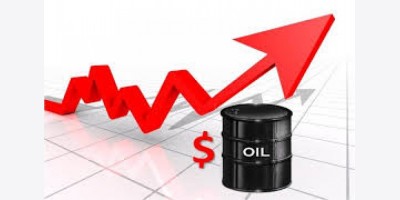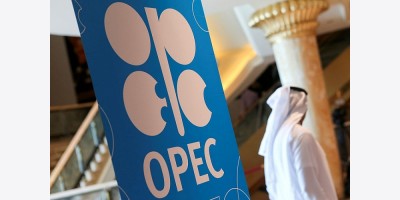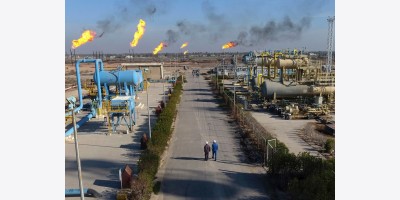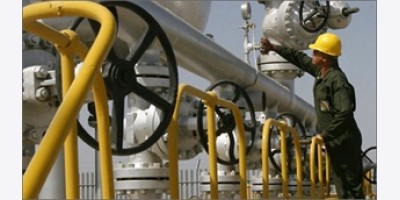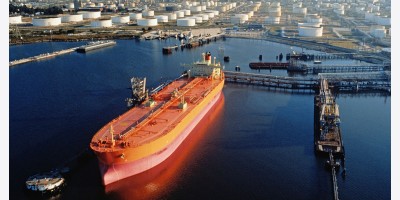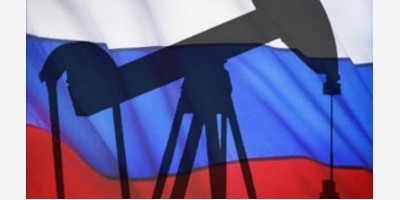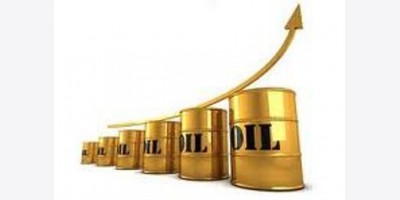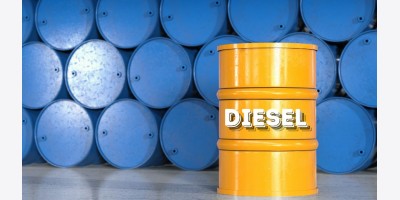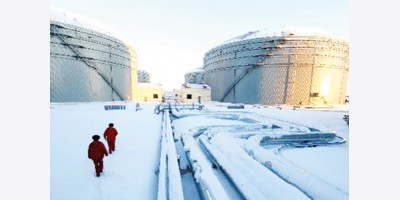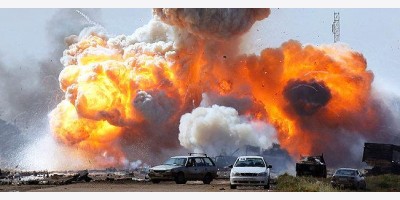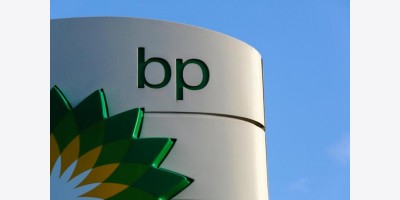Oil Price Hit by OPEC Numbers as Saudis Stand Firm on Output
Crude took a fresh drubbing yesterday as OPEC reduced its estimate for 2015 demand, Kuwait offered new discounts to Asian customers and the Saudi oil minister questioned the need for an output cut.
“Why should I cut production?” Ali Al-Naimi, Saudi Arabia’s oil minister, said in response to reporters’ questions yesterday in Lima, where he’s attending United Nations climate talks. “This is a market and I’m selling in a market. Why should I cut?”
The Organization of Petroleum Exporting Countries cut the forecast for how much crude it will need to produce next year by about 300,000 barrels a day to 28.9 million, the least since 2003. The group’s three largest members, Saudi Arabia, Iraq and Kuwait, are offering oil to Asian buyers at the deepest discounts in at least 6 years.
Oil Prices
Brent crude, the international benchmark, tumbled 3.9 percent to $64.24 a barrel yesterday on the London-based ICE Futures Europe Exchange. That’s the lowest settlement price since July 2009. West Texas Intermediate oil dropped 4.5 percent to $60.94 on the New York Mercantile Exchange. An Iranian official warned on Dec. 9 that prices could drop to $40 a barrel should OPEC’s unity break down. Bonds issued by oil-exporting countries sank along with crude futures.
Brent crude slumped into a bear market this year amid speculation that Saudi Arabia and other nations in OPEC won’t cut output in response to a surplus. Prices plunged 17 percent since the group met on Nov. 27 and agreed to maintain a 30 million-barrel-a-day production target. OPEC said in a monthly report today that demand for its crude is weakening amid expanding supplies from U.S. shale producers.
‘Paradigm Shift’
“Naimi can’t change policy within two weeks of an OPEC meeting; they’ve got to stick it out for at least a quarter to make it obvious that non-OPEC can’t rely on high and stable prices,” Paul Horsnell, head of commodities research at Standard Chartered Plc, said by phone from London yesterday. “If it’s clear there’s damage done on non-OPEC, that’s the time they can start calling the dogs off.”
Any break in OPEC solidarity or price war will lead to an “enormous price-dive shock” that would push oil to $40 or $50, Mohammad Sadegh Memarian, an Iranian Oil Ministry official, said at a conference in Dubai Dec. 9.
“Saudi’s paradigm shift clearly shows their frustration with increasing supplies globally, OPEC and non-OPEC both,” Abhishek Deshpande, an analyst in London at Natixis SA, said by e-mail. “Saudi is testing the water here with unconventional non-OPEC producers.”
Oil Discounters
Kuwait Petroleum Corp., the state-run oil company, will sell its crude to Asian refiners at $3.95 a barrel below regional benchmarks next month, the company said yesterday. That’s the biggest discount since December 2008, data compiled by Bloomberg show. Iraq’s discount in Asia is the biggest in at least 11 years and Saudi Arabia widened the discount on Arab Light to the most in at least 14 years.
Crude will stay at about $65 a barrel for at least half a year until OPEC changes its production or economic growth revives, Nizar Al-Adsani, chief executive officer of state-run Kuwait Petroleum Corp. said Dec. 8.
Prices now are below what 10 out of OPEC’s 12 members need for their annual budgets to break even, according to data compiled by Bloomberg. Kuwait and Qatar are the exceptions. Saudi Arabia, OPEC’s biggest member, has $742.4 billion of reserve assets, data from the country’s monetary agency show. OPEC’s next meeting is due to take place on June 5.
Oil Exporters
Venezuela’s benchmark dollar notes due 2027 fell 2.71 cents on the dollar to 43.95 cents yesterday, the lowest since September 1998, according to data compiled by Bloomberg. Kazakhstan’s $1.5 billion of securities due 2024 have tumbled 7.4 cents this month to 90.03 cents on the dollar.
Demand for OPEC’s crude next year will slump to the lowest since totaling 27.05 million a day in 2003, the group’s data show.
The group’s 12 members last month pumped about 1.15 million barrels a day more than the 2015 level. OPEC produced 30.05 million a day in November, down 390,000 barrels a day from the previous month because of lower production in Libya, according to data from analysts and media organizations referred to in the report as “secondary sources.”
Kuwait Offers Biggest Oil Discount to Asia Since 2008
Kuwait is offering Asian buyers the largest discount for oil in six years, joining Saudi Arabia and Iraq in lowering prices.
Kuwait Petroleum Corp., the state-run oil company, will sell its crude at $3.95 a barrel below the regional benchmarks next month, the company said in a faxed statement yesterday. That’s the biggest discount since December 2008, data compiled by Bloomberg show. It was $2.10 this month.
Saudi Arabia, the world’s biggest oil producer, lowered its official selling prices to Asia and the U.S. on Dec. 5 after the Organization of Petroleum Exporting Countries decided last month to maintain production. Crude is trading in a bear market as the highest U.S. production in three decades exacerbates a global glut.
“In this situation of oversupply in crude, everyone has to defend his market share,” Gerrit Zambo, an oil trader at Bayerische Landesbank in Munich, said by telephone yesterday. “Producers are trying to sell as much oil as they can, even with low oil prices.”
Middle Eastern producers are competing with cargoes from Latin America, North Africa and Russia for buyers in Asia. They’ve lowered price differentials and maintained output, raising speculation they are seeking to defend market share.
Iraq’s discount in Asia is the biggest in at least 11 years and Saudi Arabia widened the discount on Arab Light to the most in at least 14 years.
Saudi Numbers
“The Saudi numbers to Asia were quite outside of the expectations,” Johannes Benigni, chairman of JBC Energy GmbH, said at an oil industry conference in Dubai on Dec. 9. Middle Eastern suppliers to Asia are facing more competition from producers that used to sell oil into the U.S. or Europe, while buyers are seeking new, less expensive supplies, he said.
Persian Gulf oil producers sell most of their crude under long-term contracts to refiners. Most of the region’s state oil companies price their oil for sale in future months at a premium or discount to a benchmark.
Kuwait has sold its crude to Asia at a discount to Saudi Arabia since at least June 2000, according to data compiled by Bloomberg. Kuwait ranks third for output, along with the United Arab Emirates, among the 12 OPEC members, the data show.
Ecuador Plans Budget Cuts, New Debt as Oil Drop Saps Revenue
By Nathan Gill Dec 11, 2014 3:11 AM GMT+0800
Ecuador, which relies on crude for about a third of its budget, plans to cut spending next year by as much as $1.5 billion and will seek additional financing after prices for the OPEC member’s oil fell to five-year lows.
The South American nation will trim current and investment spending and use credit lines from multilateral lenders to offset lower oil prices, the Finance Ministry said yesterday in an e-mailed response to questions from Bloomberg News. Ecuador is also planning tax reforms to boost government revenue and accelerate private investment and may seek additional financing if crude doesn’t stabilize next year, the ministry said. Government bonds extended their declines today.
With prices for the nation’s Oriente crude down 23 percent since congress approved President Rafael Correa’s 2015 budget proposal on Nov. 20, the government has said it would reduce funds for new schools and police stations before sacrificing outlays on oilfields and so-called strategic projects needed to generate revenue. Correa, a 51-year-old former economics professor, is also planning a trip to China in January to seek new loans to help offset the drop in crude, the Finance Ministry said.
“The planned total of these measures is in the range of $1 billion to $1.5 billion, without additional financing,” the ministry said in the statement. The government “will search for additional funding in the event that the price of oil doesn’t stabilize during the execution of the 2015 budget.”
Lost Revenue
Today, the ministry announced it would sell up to $1.7 billion of debt in local markets to help pay for budgeted expenses this year, according to a regulatory filing published on the Quito securities exchange’s website. The sale will begin with $100 million of 20-year Treasury notes, the statement said.
Ecuador, which defaulted on $3.2 billion of foreign debt in 2008 after crude tumbled 58 percent, will lose an additional $2.5 billion in oil revenue next year if prices remain at current levels, according to Siobhan Morden, the head of Latin America strategy at Jefferies LLC.
Roberto Villacreses, a research analyst at the Ecuadorean Institute of Political Economy, estimates extra financing needs may rise between $3 billion and $4 billion.
The drop in crude prices “implies billions in either cutbacks or new financing, which poses a difficult adjustment for the small size of the Ecuador economy,” Morden said in an e-mailed note to clients yesterday before the Finance Ministry’s announcement. “The alternative to pro-fiscal tightening is the politically more palatable option of sourcing funding with plans for an official trip to China.”
Crisis Costs
Ecuador, the smallest-producing member of the Organization of Petroleum Exporting Countries, has relied on higher taxes and loans from China and multilateral lenders such as the InterAmerican Development Bank to help fund spending since Correa took power in 2007. The government hasn’t saved any of the windfall profits from an oil boom that drove prices for its crude to a 10-year high of $133 a barrel in 2008. Instead, it will use credit lines to offset the drop in oil, Correa told reporters Nov. 25 in Guayaquil.
“We are prepared, but that doesn’t mean that we’ll get out of a crisis without costs,” Correa said. “The adjustment variable in the case of a reduction in the price of oil is the investment budget. If we planned 200 new schools, it will only be 150.”
The government can reduce the budget by as much as 15 percent without seeking congress’s approval.
West Texas Intermediate crude has fallen 38 percent this year to $60.76 a barrel as of 2:01 p.m. New York time while Ecuador’s Oriente oil has dropped 45 percent, data compiled by Bloomberg show.
Bond Decline
As oil fell, the Andean nation’s bonds have tumbled to record lows, pushing borrowing costs higher. Ecuador’s benchmark dollar debt due in 2024 extended losses today with yields rising 0.53 percentage point to 9.43 percent. That’s the highest level since the notes were sold in June.
While decreasing spending on social programs such as new schools may have political costs, cutting funds for oil investments or a series of planned hydroelectric dams designed to reduce costly fuel imports would sap future revenues that have long-term benefits, Juan Lorenzo Maldonado, an economist at Credit Suisse Group AG, said yesterday in a telephone interview from New York.
“Cutting social programs is always something that’s socially and politically sensitive,” Maldonado said. “If you are able to communicate to your population the need and the whys of your position, then you may very well be able to do it without getting too much social disagreement.”
U.S. Refineries Boost Oil Use to Record as Prices Plunge
Refiners in the U.S. used the most oil ever last week, taking advantage of crude prices tumbling to a five-year low.
Plants processed 16.6 million barrels a day of crude in the week ended Dec. 5, the most in Energy Information Administration data going back to 1989. The rise occurred as futures tumbled to the lowest in more than five years after the Organization of Petroleum Exporting Countries decided Nov. 27 to maintain output levels and as U.S. production climbed to the highest level in three decades.
The access to cheaper domestic crude and natural gas has enabled U.S. refiners to increase operating rates to above 95 percent for the first time since 2005, increasing gasoline supply and driving down prices at the pump to the lowest level in more than four years. Refineries have used more crude in each of the past six weeks as seasonal turnarounds wound down.
“Prices are going down and production is going to continue rising,” said Tom Finlon, Jupiter, Florida-based director of Energy Analytics Group LLC. “The crude needs to be processed into fuels consumers use and the refiners are in that business. They’re ready after performing seasonal maintenance.”
Gasoline supplies rose 8.2 million barrels to 216.8 million in the week ended Dec. 5, the biggest gain since the week ended Sept. 21, 2001. Inventories of distillate fuel, a category that includes diesel and heating oil, climbed 5.58 million to 121.8 million, the biggest increase since January.
Production Gain
U.S. oil output expanded to 9.12 million barrels a day last week, the most in weekly records that started in January 1983, EIA data showed. Horizontal drilling and hydraulic fracturing, or fracking, have unlocked supplies in shale formations in North Dakota, Texas and other states. Most of the output is light, sweet crude, or oil with low density and sulfur content.
“Refiners have been getting better at using the lighter, sweeter crude that we’re producing,” Stewart Glickman, an equity analyst at S&P Capital IQ in New York, said by phone. “Refineries have been forced to make changes to deal with the rise in domestic crude. The tinkering is paying off.”
West Texas Intermediate crude for January delivery dropped $2.88, or 4.5 percent, to $60.94 a barrel on the New York Mercantile Exchange. It was the lowest settlement since July 2009. Brent futures fell 3.9 percent to $64.24 on the ICE Futures Europe exchange, also the lowest close since July 2009.
Fuel Prices
Gasoline futures for January delivery slipped 4.8 percent to $1.6418 a barrel on the Nymex, the lowest settlement since September 2009. Pump prices slipped 1.6 cents to $2.639 a gallon nationwide yesterday, the lowest since February 2010, according to AAA, the largest U.S. motoring group.
The crack spread, the profit to process three barrels of oil into two of gasoline and one of heating oil, rose to $13.74 a barrel at 3:19 p.m. based on January Nymex futures.
“Refinery cracks are still healthy after the drop in prices and refineries are capitalizing on that” John Kilduff, a partner at Again Capital LLC, a New York-based hedge fund that focuses on energy, said by phone.
Saudi Arabia Says ‘Why Should I Cut Production?’ as Crude Falls
Saudi Arabia’s oil minister indicated the nation isn’t planning to cut production even as crude fell to its lowest since 2009.
“Why should I cut production?” asked the minister, Ali Al-Naimi, who spoke to reporters as he attended United Nations global warming talks in Lima, Peru. “You know what a market does for any commodity. It goes up and down and up and down.”
The nation, the biggest producer in the Organization of Petroleum Exporting Countries, supplied 9.6 million to 9.7 million barrels a day last month. Brent crude futures in London fell below $65 a barrel for the first time since 2009 today.
“This is a market and I’m selling in a market. Why should I cut?,” Naimi said. Asked if the market will correct itself, he said “that is what markets do.”
Asked if he was worried about the market, he said, “do I look worried?”
Eni CEO Sees Oil Price Heading for Rebound by the End of 2015
Eni SpA (ENI) sees the price of crude rising by the end of next year or the beginning of 2016 and will try to keep its dividend steady despite oil’s drop, the chief executive officer of Italy’s largest oil company said.
Brent, a global benchmark, fell to a five-year low today as OPEC said it expects demand for its crude next year to be the lowest since 2003. With the slump in prices, companies are scrapping capital-expenditure budgets to protect payouts. The decline in investment may change the long-term outlook of global supply, switching today’s glut to a squeeze in a few years’ time and ratcheting up prices.
The price “reduction is something we expected, maybe not so drastic,” CEO Claudio Descalzi said in an interview in Rome. “This situation can last for 2015, but gradually is going to disappear.” While the current low price will cut into profit, dividends will remain a priority, he said. Every $1 drop in the oil price on an annual basis takes as much as 100 million euros ($124 million) off net income, he said.
Oil Prices
Eni is also making the most of its geopolitical position since it is unaffected by Russian President Vladimir Putin’s cancellation of the South Stream pipeline project and is benefiting from cheap assets in Africa under the low oil price.
Putin backed out of South Stream -- a $45 billion pipeline that would have brought gas to Europe under the Black Sea -- following European Union objections on legal grounds.
“We didn’t get additional gas from South Stream and we have a contract that protects us from future gas production or gas availability,” Descalzi said. “So for Eni, nothing changes in terms of volume and capacity.”
Platts Analysis of U.S. EIA Data
Record U.S. crude oil runs lead to bearish product stock builds
Platts Oil Futures & Options Editor James Bambino
New York - December 10, 2014
Soaring crude oil inputs at U.S. refineries helped to push combined U.S. gasoline and distillate stocks 13.78 million barrels higher the week ended December 5, U.S. Energy Information Administration (EIA) oil data showed Wednesday.
Despite the higher demand from refiners, the buildup in U.S. product stocks weighed on the oil complex, helping to drag prompt New York Mercantile Exchange (NYMEX) and IntercontinentialExchange (ICE) Brent crude oil futures more than $3 per barrel (/b) lower in the wake of the release of the EIA data.
Net inputs to U.S. refineries rose 271,000 barrels per day (b/d) to a record 16.627 million b/d during the week ended December 5, eclipsing the 16.626 million b/d seen the week ended July 11.
The increase helped to bring U.S. refinery utilization rates 2 percentage points higher to 95.4% of capacity -- nearly 3 percentage points higher than at this time last year. Analysts surveyed Monday by Platts, however, had been expecting runs to have remained flat.
Still-strong refining margins on the U.S. Gulf Coast (USGC) are likely behind the build in product stocks. The 30-day moving average for the Louisiana Light Sweet cracking margin is currently $8.50/b, although they faltered the week ended December 5, averaging just $4.85/b.
Platts margin data reflects the difference between a crude oil's netback and its spot price. Netbacks are based on crude oil yields, which are calculated by applying Platts product price assessments to yield formulas designed by Turner, Mason & Co.
As a result, the soaring runs helped to push U.S. gasoline stocks 8.2 million barrels higher to 216.76 million barrels the week ended December 5, while distillate stocks rose 5.58 million barrels to 121.75 million barrels.
The details of the build in gasoline stocks drove prompt NYMEX RBOB futures to an intraday low of $1.6300 per gallon Wednesday following the EIA release, even as inventories remain slightly below the five-year average.
Stocks on the U.S. Atlantic Coast (USAC) -- home to the New York Harbor-delivered RBOB contract -- rose 2.21 million barrels to 52.36 million barrels. Yet stock here too remains relatively tight, at a more than 5% deficit to the five-year average.
The build is mostly centered on the USGC, where gasoline stocks the week ended December 5 rose 2.83 million barrels to 81.35 million barrels. Stocks in this region are almost 9.3% above the five-year average.
Sharply lower implied demand* likely helped boost inventories, as production fell 424,000 b/d week over week to 9.17 million b/d. U.S. gasoline supplies fell 876,000 b/d to 8.55 million b/d the week ended December 5.
Meanwhile, the rise in U.S. distillate stocks was led by a 2.76 million-barrel build in USGC low- and ultra-low-sulfur diesel stocks, which rose to 35.29 million barrels. This puts stocks in the region near parity with the five-year average.
Prior to this, so far in 2014, combined stocks on the USGC had averaged a near 12% deficit to the five-year average, which largely reflected the robust export market for U.S. distillates in both Europe and Latin America.
USAC combined stocks rose 1.64 million barrels to 28.34 million barrels, putting inventories there at a near 7% surplus to the five-year average, signaling more-than-adequate supply for the region as winter demand picks up.
Implied demand for U.S. distillates, however, fell 108,000 b/d to 3.47 million b/d the week ended December 5. This time last year the same measure was just 3.3 million b/d.
U.S. CRUDE OIL STOCKS RISE
U.S. commercial crude oil stocks rose 1.45 million barrels to 380.79 million barrels the week ended December 5, bringing inventories to a 7.33% surplus to the five-year average.
The build was largest on the U.S. West Coast (USWC), where stocks rose 1.34 million barrels to 54.27 million barrels. USWC imports rallied 360,000 b/d to 1.16 million b/d.
USGC crude oil stocks rose 537,000 barrels to 193.62 million barrels amid a 489,000 b/d jump in imports, which rose to 3.57 million b/d. The rebound in imports likely softened the impact of the record crude oil runs in the region.
Stocks at Cushing, Oklahoma -- delivery point for the NYMEX crude oil futures contract -- rose 1.02 million barrels to 24.91 million barrels, putting them nearly 16 million barrels below year-ago levels.
Despite the comparatively tight supply situation at Cushing, NYMEX crude oil futures remain firmly in contango**. NYMEX January crude oil was trading at a discount of 18 cents per barrel to the February contract during midday U.S. trading.
*Implied demand is the amount of product that moves through the US distribution system, not actual end consumption.
**Contango is the industry vernacular for the condition whereby prices for nearby delivery are lower than prices for future-month delivery.
Exxon: Oil will account for 32% of world energy by 2040
THE ASSOCIATED PRESS
NEW YORK: North America, once a sponge that sucked in a significant portion of the world's oil, will instead be supplying the world with oil and other liquid hydrocarbons by the end of this decade, according to ExxonMobil's annual long-term energy forecast.
And the "almost unspeakable" amount of natural gas found in recent years in the US and elsewhere in North America will be enough to make the region one of the world's biggest exporters of that fuel by 2025, even as domestic demand for it increases, according to Bill Colton, Exxon's chief strategist.
"The world has such an improved outlook for supplies," Colton said in an interview. "Peak oil theorists have been run out of town by American ingenuity."
In a forecast that might make economists happy but environmentalists fret, Exxon's two chief products, oil and natural gas, will be abundant and affordable enough to meet the rising demand for energy in the developing world as the global middle class swells to 5 billion from 2 billion and buys energy-hungry conveniences such as cars and air conditioners.
This is a result of advances in drilling technology that have made it possible for engineers to reach oil and gas in unconventional rock and extreme locations and quieted talk that the world was quickly running out of oil.
And it is despite what Exxon assumes will be increasingly strict policies around the world on emissions of carbon dioxide and other gasses emitted by fossil fuel use that scientists say are triggering dangerous changes to the world's climate.
Exxon's outlook forecasts world energy supply and demand through 2040 and is updated every year. It is noted by investors and policymakers and used by Exxon to shape its long-term strategy. Colton said the recent sharp decline in oil prices does not have much effect on the company's long-term vision, and that the company expects prices to rise and fall, sometimes dramatically, throughout the period.
Exxon's vision is broadly similar to that of other forecasters, including those by the International Energy Agency, which released its most recent long-term forecast last month. Demand for energy will grow rapidly in coming decades in the developing world, while demand in the developed world is expected to be flat or even decline as countries impose stricter emissions policies and become more efficient.
The use of coal, now the world's second most important fuel after oil, will eventually slip as countries try to reduce air pollution and greenhouse gas emissions. Natural gas, which burns cleaner than coal and emits half the global warming gases as coal, will supplant coal in the number two spot.
Exxon takes a relatively dim view of the prospects for renewable energy, however. It believes that some of the aggressive targets for renewables cited by governments are too expensive to come to fruition, and the technologies have not advanced far enough to make them cheap or effective enough for broad adoption globally.
"They are just not ready for prime time," Colton says.
While Exxon expects wind, solar and other non-hydro electric energy to grow faster by far than any other energy technology over the period, those renewables will provide just 4 percent of the world's energy by 2040, up from 1 percent in 2010. Fossil fuels will still dominate: Oil will account for 32 percent of world energy, natural gas for 26 percent, and coal for 19 percent. Nuclear and biomass will account for 8 percent each, and hydroelectric power will account for 3 percent.
Michael E. Mann, a climate scientist and director of Penn State's Earth System Science Center, notes that many experts dispute Exxon's conclusion on renewables because in several places around the world renewable energy is competitive with the price of traditional power, even without a high price on carbon pollution that Exxon and others seem to agree is coming.
Scientists say if Exxon's vision comes to pass the world's climate system will become dangerous and chaotic, and some environmental economists suggest that economies will be forced to stop burning fossil fuels at such high rates to prevent catastrophic climate change.
"Exxon's vision of a fossil fuel-driven future is one in which carbon dioxide levels rise well beyond the dangerous limit, where we will witness fundamental threats to food, water, land, our economy, national security, and our environment," Mann says. "Let us hope, for the sake of us and our planet, that this is not our future."
Other recent scientific studies have raised questions about whether oil and gas companies and government forecasters are overestimating how much oil and gas is accessible in the shale formations that have fueled the US boom in oil and gas production.
Ken Cohen, Exxon's government and public affairs chief, says the studies "are not consonant with the facts." He says Exxon is finding instead that improving technology is increasing productivity of each well they drill.
That will mean that the end of the decade, North America will be exporting more oil and liquid hydrocarbons than it imports, a remarkable turnaround for a region that was a major global importer.
"Limitations are political and policy-related more than technical," Cohen says.
OPEC Cuts '15 Demand for its Oil as Shale Boom Persists
Global demand for OPEC crude in 2015 will be less than expected and far below its current output, the group said on Wednesday, pointing to a hefty supply surplus without OPEC output cuts or a slowdown in the U.S. shale boom.
In a monthly report, the Organization of the Petroleum Exporting Countries (OPEC) forecast demand for the group's oil will drop to 28.92 million barrels per day (bpd) in 2015, down 280,000 bpd from its previous expectation and over 1 million bpd less than it is currently producing.
The report follows OPEC's decision last month not to prop up prices by cutting output. Top exporter Saudi Arabia urged fellow members to combat the growth in U.S. shale, which needs relatively high prices to be economic and has been eroding OPEC's market share.
OPEC's Nov. 27 decision to retain its output target of 30 million bpd sent prices plunging. Brent crude on Wednesday was trading below $66 a barrel, close to a five-year low and down more than 40 percent since June.
The report cut its forecast for growth in global demand in 2015 due to a weaker outlook for Europe and Asia, and predicted higher supply growth from shale and other non-OPEC sources, although it said this may be slowed if prices stay weak.
"Should the current fall in crude prices continue over a longer period, it will impact the non-OPEC supply forecast for 2015, especially anticipated growth in tight crude," OPEC's report said, using another term for shale oil.
For now though, OPEC's report indicates that, with OPEC pumping 30.05 million bpd in November according to secondary sources cited by the report, there will be a surplus of 1.13 million bpd in 2015, and 1.83 million bpd in the first half.
According to the secondary-source figures, OPEC output fell by 390,000 bpd from October, largely because of unrest in Libya and smaller reductions in Saudi Arabia and Kuwait.
Saudi Arabia told OPEC it trimmed production by 80,000 bpd - a reduction that industry sources said earlier this month probably reflects lower domestic demand in power plants rather than a cut in exports.
OPEC expects non-OPEC supply to rise by 1.36 million bpd in 2015, led by the United States. The forecast was raised by 120,000 bpd from last month's report.
World Demand for OPEC Crude to Fall in 2015
The Organization of Petroleum Exporting Countries (OPEC) released its December Oil Market Report Wednesday morning, and the cartel said that demand will fall and supply will rise in 2015. No surprises there — in fact, no surprises anywhere.
OPEC now estimates world demand in 2015 to reach 92.26 million barrels a day, up 1.12 million barrels a day over the expected total for 2014. The cartel’s supply forecast calls for non-OPEC supply to total 57.31 million barrels a day in 2015, up from 55.95 million barrels a day on average in 2014. World demand for OPEC crude is set to fall from an average of 29.4 million barrels a day in 2014 to 28.9 million barrels a day in 2015.
The cartel never forecasts its own supply, choosing instead to cite unnamed secondary sources for estimates of demand on OPEC. In November these secondary sources put OPEC’s total crude production at 30.05 million barrels a day, more than 1.1 million barrels a day above 2015’s projected demand on OPEC crude.
The OPEC reference basket of crude oil — a benchmark similar to Brent or West Texas Intermediate (WTI) — ended the month of November down 11% at $75.57 a barrel. That is the fifth consecutive monthly decline, something OPEC has not seen in nearly six years. The OPEC basket lost nearly $9.50 in November and has taken a loss of around $32 a barrel since July. Year to date, the basket price has averaged $99.57, down from an average of $105.72 in 2013.
Something has to give. At its meeting in Vienna in late November, the cartel chose to maintain production and market share rather than to lower production in an effort to push up prices. Some members of the cartel — Saudi Arabia and Kuwait especially — can afford to wait it out. Others — Venezuela, Angola, Nigeria, among others — argued for a production cut because they cannot afford to wait it out. Unfortunately for the poorer members of OPEC, cutting production would not likely have the desired effect, given the production boom in the United States and the absolute necessity for Russia to pump as much oil as it can.
Crude prices were diving again Wednesday morning, both as a result of the OPEC report and the American Petroleum Institute’s Tuesday evening estimate that U.S. crude inventories grew by 4.4 million barrels last week. The Energy Information Administration’s report on crude oil inventories is due later in the morning, and analysts are expecting a drop of 3 million barrels. Oil traders are siding with the API, with Brent for January delivery trading down more than 1.6% in London at $65.74 and WTI for January delivery trading down nearly 2% on the NYMEX at $62.59.
Exxon’s 25-Year Energy Outlook
Exxon Mobil Corp. (NYSE: XOM) on Tuesday released its “2015 Outlook for Energy: A View to 2040” in which the company makes some projections on the supply and demand for energy over the next 25 years.
One summarization of the report could be: Demand for energy will be 35% higher in 2040 than it is today and carbon-based fuels will continue to meet about 75% of the world’s energy demand. The good news is that without efficiency gains that 35% growth figure would be approaching 140% growth.
The fastest growth will be among renewables, with wind, solar, and biofuels growing at a rate of 6% a year to reach 4% of the world’s total energy supply by 2040. Including hydropower, renewables will meet about 15% of total demand for energy in 2040. Nuclear power generation is forecast to double.
The world’s population is forecast to add 2 billion people, bringing the global total to 9 billion. Half the demand growth for energy will come from China and India, while 32 of the 34 developed economies included in the OECD will see energy demand grow. Exxon identities 10 Key Growth countries: Mexico and Turkey, both members of the OECD; Brazil, South Africa, Nigeria, Egypt, Saudi Arabia, Iran, Thailand, and Indonesia.
Exxon includes some interesting observations on demand for transportation fuel:
Remarkably, energy demand for cars and other personal vehicles is expected to rise only slightly from 2010 to 2040, as fuel economy improvements in passenger cars over time essentially offset a steep rise in the number of cars in the world.
China alone is expected to account for 40% of the global fleet increase.
Global demand for fuel for light-duty vehicles will peak around 2020 at about 23 million oil-equivalent barrels per day.
Fuel economy for the average vehicle on the world’s roads will be 45 miles per gallon in 2040, up from 25 mpg in 2010.
Hybrid vehicles make up almost 50% new car sales by 2040, up from 1% in 2010, to comprise about a third of the global fleet.
Heavy-duty vehicles like commercial trucks and buses will be the largest consumers of transportation fuel by 2040 and demand for aviation, rail, and marine fuel will rise by 75% compared with demand in 2010.
Demand will be met by an increase of 45% in global liquids supply from unconventional sources like tight oil (shale), oil sands, biofuels, deepwater, and NGLs. Exxon reckons that by 2040 7% of the world’s supply of liquids will come from tight oil and the majority will come from North America.
Exxon also expects North America to be a net exporter of liquids by 2040 when the continent will be producing more than 10 million barrels per day and demand declining by 1 million barrels.
By 2040 North American production of natural gas will rise by 75% to around 140 billion cubic feet per day as production of unconventional gas (from shale) nearly triples.
Exxon does not take a stab a how much all this new energy will cost, but it is relatively certain that supply will not grow enough to meet demand at crude prices of around $60 a barrel. Efficiency gains and diversification will help moderate the higher prices, but energy prices will surely rise.
BP to Book $1 Billion in Restructuring Charges -- 2nd Update
By Dow Jones Business News, December 10, 2014, 09:09:00 AM EDT
By Justin Scheck and Rory Gallivan
LONDON-- BP PLC on Wednesday became the latest natural-resources company to announce cuts during a time of slumping commodity prices and uncertain demand.
The U.K. oil-and-gas company said it expects to book $1 billion in restructuring charges over the next year. Much of the savings will come from long-planned head count cuts, a spokesman said. The company's exploration-and-production chief also gave an investor presentation Wednesday that said BP "will look to pare back or re-phase spend" on development, by as much as $2 billion next year.
BP's announcement came after mining firm Anglo American PLC said Tuesday it would cut its capital spending for this year and next by at least $1.3 billion as iron ore prices remain depressed. Ivan Glasenberg, the chief executive of resources giant Glencore PLC, said Wednesday the company would reduce its spending on existing operations by about $500 million by 2017. U.S. oil company ConocoPhillips said earlier this week it would reduce capital spending next year by 20%.
BP has said it has been planning cuts for some time to bring its structure in line with its current size--it has shrunk since the 2010 Deepwater Horizon disaster, selling more than $40 billion in assets. With those sales, its production at the end of last year was about 25% lower than before the spill. Yet BP's head count at the end of last year was 84,000, up from 80,000 before the spill.
In a prepared statement Wednesday, BP said falling oil prices and its own streamlining efforts, in light of the big asset divestments, "would be expected to further help BP align its cost base with its smaller footprint and reduced activity levels."
BP said Wednesday it would incur the costs over the next five quarters, including the current quarter. The company said details of the charges and further guidance on the program would be given with each quarter's results.
"We continue to seek opportunities to eliminate duplication and stop unnecessary activity that is not fully aligned with the group's strategy, " BP Chief Executive Bob Dudley said.
BP put a price tag on its restructuring at a time when a barrel of Brent crude is trading below $66 a barrel, down from more than $115 in June. The price drop has forced giant oil companies like BP to re-evaluate the profitability of multibillion-dollar projects they've been investing in for years under higher price assumptions. In a slideshow for investors Wednesday, BP's exploration-and-production chief, Lamar McKay, displayed a chart showing the company's "margin quality expanding" with new, higher-profit projects. A footnote to the chart said BP's "planning price assumptions" include "$100 Brent."
Mr. McKay's presentation also said BP approves new projects at "$80 per barrel at which level we expect a project to generate competitive returns." He said the company also tests projects at $60 per barrel. Falling oil prices, he added, should bring the company's development costs down in coming years.
Mr. McKay on Wednesday also cited its big natural gas projects as being "typically less sensitive to oil price movements." He said the company would have a "progressive dividend policy."
Jason Kenney, an analyst with Santander, said paying dividends next year could require BP to sell further assets--a risk since low oil prices can make it tough to get a decent return for such properties.
Write to Justin Scheck at justin.scheck@wsj.com and Rory Gallivan at rory.gallivan@wsj.com
Exxon sees energy demand rising 35% by 2040
IRVING, Texas -- Significant growth in the global middle class, expansion of emerging economies and an additional 2 billion people in the world will contribute to a 35% increase in energy demand by 2040, according to a report by Exxon Mobil.
As demand increases, the world will continue to become more efficient in its energy use, according to the 2015 Outlook for Energy: A View to 2040. Without efficiency gains across economies worldwide, energy demand from 2010 to 2040 would be headed toward a 140% increase instead of the 35% forecast in the report.
Exxon’s Outlook for Energy projects that carbon-based fuels will continue to meet about three quarters of global energy needs through 2040, which is consistent with all credible projections, including those made by the International Energy Agency. The outlook shows a shift toward lower-carbon fuels in the coming decades that, in combination with efficiency gains, will lead to a gradual decline in energy-related carbon dioxide emissions.
Wind, solar and biofuels are expected to be the fastest-growing energy sources, increasing about 6% a year on average through 2040, when they will be approaching 4% of global energy demand. Renewables in total will account for about 15% of energy demand in 2040. Nuclear energy, one of the fastest-growing energy sources, is expected to nearly double from 2010 to 2040, with growth in the Asia Pacific region, led by China, accounting for about 75% of the increase.
“This research offers important perspective about the factors that will drive the world’s energy needs in the coming decades,” said Rex W. Tillerson, chairman and CEO of Exxon Mobil Corporation.
The Outlook for Energy provides Exxon Mobil’s long-term view of global energy demand and supply. Its findings help guide the company’s investments, which support its business strategy. The outlook is developed by examining energy supply and demand trends in 100 countries, 15 demand sectors covering all manner of personal and business needs and 20 different energy types.
The global middle class is expected to climb from about 2 billion in 2010 to almost 5 billion people by 2030, representing more than half of the world’s population, according to the Brookings Institution. As projected, that middle class expansion -- largely in India and China -- will be the largest in history and will have a profound impact on energy demand. Along with income gains, on-going societal changes, such as expanded infrastructure, electrification and urbanization, will contribute to greater energy use.
The Outlook for Energy identifies a significant evolution in the trade of oil and other liquids. A major shift is seen as North America will likely become a net exporter of liquids by 2020 as supplies of so-called tight oil, natural gas liquids and bitumen from oil sands increase.
This is expected to open new trading opportunities as Asia Pacific’s net imports are projected to rise by nearly 80% by 2040. Africa’s liquids exports are expected to decline as local demand more than doubles. In Latin America, growth in supplies is anticipated to outpace demand as supplies of deepwater and unconventional liquids expand.
North America unconventional gas production will nearly triple by 2040 and the region is expected to surpass the combined output of Russia and the Caspian region as the largest gas-producing area. In Asia Pacific, gas production is seen doubling by 2040, driven partly by unconventional production technologies. Demand in the region is expected to climb by about 170%, according to the outlook, and as a result, Asia Pacific will likely overtake Europe as the world’s largest gas importer.
Natural gas is expected to be the fastest-growing major fuel source during the outlook period as demand increases by about 65%. Half of that increase will come from the Asia Pacific region, led by China. Utilities and industrial operations are expected to account for about 80% of the demand increase worldwide, as operators increasingly choose natural gas because of its lower emissions and versatility as a fuel and feedstock. By 2040, natural gas is expected to account for more than a quarter of global energy use, surpassing coal in the overall mix.
Demand for coal is expected to rise through 2025 and then decline as China’s economic growth gradually slows and it follows the shift seen in Organisation for Economic Co-operation and Development (OECD) countries toward cleaner fuels. Still, over time, global coal demand is expected to remain most prominent in Asia Pacific, primarily to support growing power-generation requirements.
Other key findings of the outlook include:
• Non-OECD countries will represent 70% of global energy demand by 2040, but energy demand per person in these nations will remain well below OECD levels.
• Energy required to meet rising electricity demand will account for about half of total demand growth.
• Technologies that unlock new unconventional oil and gas supplies will help enable oil and natural gas to meet about 65% of global energy demand growth.
• Progress on curbing carbon dioxide emissions through 2040 will be led by OECD nations as energy demand declines and a shift to lower-carbon fuels occurs. Energy-related carbon dioxide emissions in those countries are projected to be about 10% below 1980 levels, even though they will have about 40% more people and significantly larger economies.
• Across OECD nations, the outlook assumes the implied cost of policies to reduce greenhouse gas emissions will reach about $80/tonne in 2040.
• Oil is expected to remain the No. 1 energy source and demand will increase by nearly 30%, driven by expanding needs for transportation and chemicals.
• By 2040, abundant sources other than conventional crude and condensate will account for about 45% of global liquids production, compared with less than 25% in 2010. Remarkably, estimates of remaining recoverable crude and condensate relative to current demand have risen from about 60 years in 1981 to about 150 years as of 2013.
• Rising natural gas demand will be met with abundant new supplies and significant expansion in trade as unconventional gas production nearly quadruples and LNG trade triples by 2040.
12/10/2014
Iran sees 'political conspiracy' in oil price fall
TEHRAN, 9 hours, 55 minutes ago
Iranian President Hassan Rouhani has blamed unnamed countries of plotting to bring down crude prices and said the recent slump in oil prices was not based solely on economic factors.
With oil prices down more than 40 per cent since June, Rouhani's administration has been scrambling for alternative sources of income. Iran's 2014 budget is based on oil at around $100 a barrel, while Brent crude is currently below $66 per barrel.
"The fall of the oil prices is not just something ordinary and economical, this is not due to only global recession," Rouhani told a cabinet session on Wednesday.
"The main reason for it is (a) political conspiracy by certain countries against the interest of the region and the Islamic world and it is only in the interest of some other countries."
Rouhani also said he had issued orders to his government to take measures to offset the effect of falling oil prices, without elaborating.
While some such as Iran and Venezuela have urged an output cut to support prices, the Organization of the Petroleum Exporting Countries (Opec) decided in a meeting last month against reducing production.
Some Saudi Arabian officials have in recent months told private briefings that the kingdom was prepared to withstand depressed oil prices, possibly as low as $70 per barrel, for a prolonged period.
Such messages have sparked conspiracy theories, ranging from the Saudis seeking to curtail the US oil boom, which needs high prices to remain profitable, to Riyadh looking to undermine Iran and Russia due to their support of Saudi's arch-enemy, Syrian President Bashar al-Assad.
Iran has in the past accused fellow Muslim countries in the region of plotting with the West to bring down oil prices as a tactic to undermine its sanctions-hit economy.
While Islamic hardliners in Iran have been quick to blame Saudi Arabia for the price falls, Rouhani and his moderate government have been careful not to antagonise the kingdom, a fellow Opec member and regional rival, in the interest of better future ties.
Riyadh has said its oil policy is based on economic principles.-Reuters
Asian LNG prices seen falling by up to 30pc in 2015
SINGAPORE, 14 hours, 0 minutes ago
Asian liquefied natural gas (LNG) prices are expected to fall by up to 30 per cent in 2015, according to a survey of analysts and consultants, as the market enters a period of oversupply and the impact of lower oil prices kicks in.
The explosive growth in LNG consumption seen in recent years has stalled on cooling Asian economies and with a resumption of nuclear energy and a greater use of coal in some markets.
At the same time new LNG production has been coming on stream, meaning tight supply conditions that had been expected to last until the end of the decade are ending more quickly.
"Demand is a lot weaker than we anticipated just six months ago," said Gavin Thompson, head of Asia-Pacific gas and power at consultancy Wood Mackenzie.
Asian spot LNG prices LNG-AS have more than halved since the start of the year to below $10 per million British thermal units (mmBtu).
Average import prices into Japan, the world's top buyer, are forecast to fall to about $11 per mmBtu next year, down from an estimated $15.50 this year and $16.45 in 2013, if Brent crude averages around $75 a barrel, according to David Hewitt, co-head of global oil and gas equity research at Credit Suisse.
If Brent trades at $85 next year, the price could be $12.60 per mmBtu, Hewitt said.
Japanese prices are a benchmark for LNG in Asia, a region which accounts for about 70 per cent of global trade.
Gas prices will also respond to falling oil prices, which have fallen 40 per cent since June, because most gas prices in the region are indexed to oil.
Others also changed their outlook. Consultancy Energy Aspects cut its forecast for 2015 spot prices by $1.70 to $12.40 per mmBtu.
LAST HURRAH?
Asian demand shot up following the 2011 Fukushima disaster as nuclear reactors were idled in Japan, while LNG costs under long-term contracts was pushed up by oil prices.
But markets are changing. In South Korea, where some reactors were shut due to a scandal over fake certificates, most have restarted, displacing LNG, while coal-fired power plants are also running at high capacity.
In Japan, a depressed economy is also limiting demand, albeit at a high level, while weak demand is now also hitting China as slower economic growth forces buyers to re-sell imports on the global market.
LNG prices are also unlikely to top cheap low sulphur heavy oil products that Japanese utilities can use instead of gas.
If Brent trades at $70 a barrel, the price of low sulphur oil will cap LNG spot prices at $10.50 per mmBtu, Wood Mackenzie's Thompson said.
With Asia's energy demand at its highest during the northern hemisphere's winter months, and long-term contracts linked to oil having a six-nine month time lag before being priced in, the recent oil price drop will only kick in around the second quarter of 2015.
"The first quarter of 2015 could be the last hurrah for LNG prices for a while. If Northeast Asia is mild again, then the ramp up of prices could be really very subdued and will lead us into a couple of years of oversupply," said Energy Aspects' Trevor Sikorski.
Credit Suisse said around 5 million tonnes of supply will come to market next year from Australia, 14 million tonnes less than initially expected, due to delays.
"Buyers are relatively comfortable with delays and slower ramp-ups, because they don't really want to take that gas now," said Thompson. -- Reuters
Oil producers face 'huge liabilities' in climate deal
LIMA, 1 days ago
Saudi Arabia’s top climate negotiator said that growing pressure to phase out fossil fuels does not help the UN climate negotiations and that a new climate deal should help oil producers diversify their economies.
As UN climate change negotiations enter their second week in Lima, chief Saudi Arabian negotiator Khalid AbuLeif said a deal on climate change to be finalized next year in Paris should address the "vulnerabilities" of countries whose economies are dependent on a single resource or sector.
But pressure from environmentalists to end fossil fuel use and the possibility of a climate deal that calls for zero emissions by mid-century could get in the way of progress, he said.
"With a concept like zero emissions and ‘let’s knock fossil fuels out of the picture’, without clear technology diffusion and international cooperation program, you are really not helping the process," he told reporters.
The future climate deal is inherently at odds with the objectives of oil exporters, AbuLeif said.
“Inevitably oil producers are going to be faced with huge liabilities if the implementation of the convention is advocating a move away from fossil fuels."
AbuLeif's remarks came as green groups protested at an event co-sponsored by Royal Dutch Shell and the Global Carbon Capture and Storage Institute on the sidelines of UN talks on reconciling climate targets with economic growth and fossil fuel use.
"Without tackling the influence of the fossil fuel industry, we're never going to stop dangerous climate change," environmental group 350.org said.
Green groups have argued that the current period of low oil prices, which have slumped 40 per cent since the summer, should encourage investors and energy companies to weigh both the environmental and financial risks of burning all the world's known oil, gas and coal reserves.
Low oil prices have also raised concerns that policymakers will be less motivated to jumpstart renewable energy development.
AbuLeif said abandoning fossil fuels is premature because "2 billion people do not have access to energy."
A deal that offers new technology and money to help countries rely less on a single sector such as oil, tourism or agriculture would be key, he said.
"We know we are in a race with time. Climate change and economic diversification for us is hand in hand," AbuLeif said. -- Reuters
Saudi Arabia to keep January crude supply to Asia steady
TOKYO, 1 days ago
Saudi Arabia, the world's top crude exporter, will keep supplies at full contracted volumes for Asian term buyers in January, industry sources said, the latest sign the kingdom is holding firm against falling prices caused by oversupply.
Coming less than a week after Saudi Arabia slashed January prices to Asia and within two weeks of blocking an Opec output cut, the kingdom is maintaining pressure on non-Opec producers to cut production.
Oil fell to a five-year low and is down more than 40 per cent since June as a weakening global economy saps demand for crude amid surging output from US shale formations.
"There was no change in supplies ... It was as expected," an industry source said, who added that he has not seen any sign that Middle East producers are planning cuts in contracted volumes.
Another industry source said Saudi Arabia had notified his company of its intention to hold contracted volumes steady from December
Saudi Arabia blocked calls last month from poorer members of the Opec oil exporter group for production cuts to arrest a slide in global prices, sending benchmark crude plunging to multiple year lows.
The Opec producer has supplied full contractual volumes to most Asian buyers since late 2009.
"The new reality is that Opec on its own will no longer be able to rebalance oversupplied oil markets," Macquarie said in a research note. "Although production growth should slow in key non-Opec regions, including the US, Russia, the North Sea and Latin America, the timing is less clear." -- Reuters
Market, not Opec, will set fair oil price, says UAE
ABU DHABI, 1 days ago
Market fundamentals and high-cost crude producers, rather than Organisation of the Petroleum Exporting Countries (Opec), are the ones that will set a fair price for oil in coming months, a UAE oil official said.
"The way I see it, it is the market which will dictate the oil price. Prices are driven by supply and demand ... marginal fields are going to set the (fair) price," said Mubarak Al Ketbi, deputy director of the marketing and refining directorate at state-run Abu Dhabi National Oil Company (Adnoc).
"Opec is not a price setter. The market will set the price," Ketbi told the Platts Middle East Crude Oil Summit in Dubai, declining to comment later on any specific oil price target for the UAE, a core Gulf Opec producer.
Prices have fallen more than 40 per cent since June and Brent crude for January delivery hit $65.33 a barrel on Tuesday, its lowest since September 2009.
At a meeting last month, the Opec decided against reducing production, despite its own forecasts of a surplus and calls from members including Iran and Venezuela for output cuts to shore up prices.
On Monday, the head of Kuwait's state oil company predicted that oil prices were likely to remain around $65 for the next six to seven months, echoing the views of other Gulf delegates who saw oil hovering around $65-70 for a few months before bouncing back to around $80.
Meanwhile, the UAE has reiterated that it will keep its currency peg to the US dollar after an unusually large move by the dirham in the forwards market.
Asked by Reuters whether the dollar's global strength was putting any pressure on the peg, Saif Al Shamsi, assistant governor for monetary policy and financial stability, said the dirham had effectively been pegged since the 1980s.
"We have been maintaining this peg and this exchange rate since 1980 until today, and in the future we will continue with this."
He cited a central bank statement at the end of last month which reaffirmed the UAE's commitment to the peg.
Over the last two weeks the dirham, fixed at 3.6725 to $1, has edged down to its lowest level against the dollar in over a year in the one-year forwards market, implying marginal depreciation against the peg over the next year.
Local bankers believe some investors are reacting to the plunge of global oil prices to five-year lows, as well as a similar move in Saudi riyal forwards, which are often used as a proxy for risk in the region.
However, they do not think the UAE or Saudi currency pegs face any serious pressure or risk of coming under attack, since the big Gulf economies have built up huge fiscal reserves which they could use to keep spending high for years, even if oil stays near $70 a barrel.
Citing a forecast by the International Monetary Fund, Shamsi said on Tuesday that he expected the UAE's gross domestic product to grow 4.25 per cent in 2014, with the non-oil sector expanding 5.5 per cent in both 2014 and 2015.
"The UAE economy is diversified - more than 60 per cent is non-oil," he said. -Reuters
The producer group trimmed its forecast for global oil demand growth. It expects demand to rise by 1.12 million bpd next year, or 70,000 bpd less than previously thought. (Reporting by Alex Lawler, editing by William Hardy)




